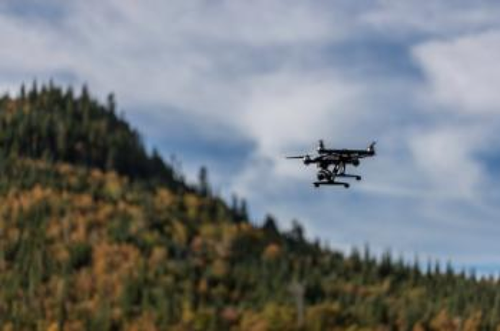Safe Navigation of High-Speed Drones

Autonomous drones are cautious when navigating the unknown. They creep forward, frequently mapping unfamiliar areas before proceeding lest they crash into undetected objects. But this slowdown isn’t ideal for drones carrying out time-sensitive tasks, such as flying search-and-rescue missions through dense forests. Now MIT researchers have developed a trajectory-planning model that helps drones fly at high speeds through previously unexplored areas, while staying safe.
The model — aptly named “FASTER” — estimates the quickest possible path from a starting point to a destination point across all areas the drone can and can’t see, with no regard for safety. But, as the drone flies, the model continuously logs collision-free “back-up” paths that slightly deviate from that fast flight path. When the drone is unsure about a particular area, it detours down the back-up path and replans its path. The drone can thus cruise at high speeds along the quickest trajectory while occasionally slowing down slightly to ensure safety.
The researchers are currently building larger FASTER-powered drones with propellers designed to enable steady horizontal flight. Traditionally, drones will need to roll and pitch as they’re flying. But this custom drone would stay completely flat for various applications. A potential application for FASTER, which has been developed with support by U.S. Department of Defense, could be improving search-and-rescue missions in forest environments, which present many planning and navigational challenges for autonomous drones. “But the unknown area doesn’t have to be forest,” Jonathan How, the Richard Cockburn Maclaurin Professor of Aeronautics and Astronautics, says. “It could be any area where you don’t know what’s coming, and it matters how quickly you acquire that knowledge. The main motivation is building more agile drones.”

